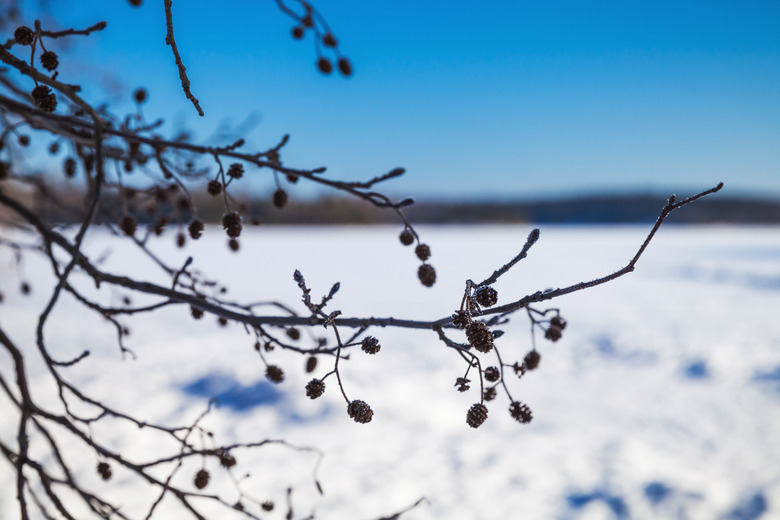Tundra Trees
The tundra is a biome that is characterized by long, cold winters, little precipitation and strong winds. Typically, the tundra is considered to be a barren or treeless land, but a few hardy specimens of trees and shrubs do manage to survive in the harsh tundra environment, especially in lower latitudes and transitional microclimates. The combination of permafrost below the ground, little true soil on the surface and the strong winds have favored the growth of small, tough trees in the tundra.
Willow
Willow
Willows in the tundra are dwarf versions of the familiar temperate-zone trees. Dwarf willows are woody shrubs that may only be a few inches high, with their branches spread prostrate across the ground to take advantage of what shelter may be found near the surface. Willow shrubs often make use of dead woody plants as cover from the cold and the wind. Along streams, however, willows may grow as high as ten feet tall. Willows are found in the low, but not the middle- or high-arctic tundra.
Alder
Alder
Alder trees are members of the birch family. They prefer moist soil and have shallow, spreading roots that are well-suited to the limited soil depths of the tundra regions. Like willows, alders found growing alongside streams may reach heights of up to 10 feet.
Heaths
Heaths
Heaths, or heathers, are members of the Ericacea family and typically have hard, evergreen leaves that are able to withstand drying winds and cold temperatures, according to Radford University. Berry-bearing members of the heath family include the blueberry, cranberry and rhododendron. The Labrador tea shrub is a heath with aromatic leaves that will grow up to six feet tall in regions south of the tundra. In the arctic, however, this shrub often only grows to be two or three inches tall. Heaths are found in the low arctic tundra and the smallest, hardiest dwarf heaths are found in the mid-arctic tundra. No heaths can withstand the conditions of the northern-most high tundra.
Spruce and Fir
Spruce and Fir
Spruce and fir trees are typically found in the boreal forests that lie to the south of the tundra. However, there are small microclimates in the tundra in which conditions are milder and more protected. In these locations, such as on south-facing slopes where the permafrost is deeper below the surface, spruce and fir will grow. As well, rising temperatures brought on by global warming are causing spruce and fir species to grow in land traditionally considered to belong to the tundra.
Cite This Article
MLA
Brooks, Lizzie. "Tundra Trees" sciencing.com, https://www.sciencing.com/tundra-trees-7423473/. 22 November 2019.
APA
Brooks, Lizzie. (2019, November 22). Tundra Trees. sciencing.com. Retrieved from https://www.sciencing.com/tundra-trees-7423473/
Chicago
Brooks, Lizzie. Tundra Trees last modified March 24, 2022. https://www.sciencing.com/tundra-trees-7423473/
